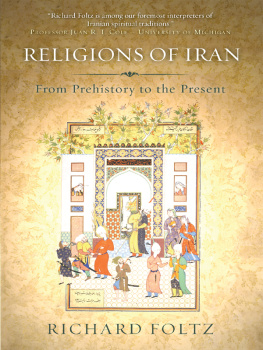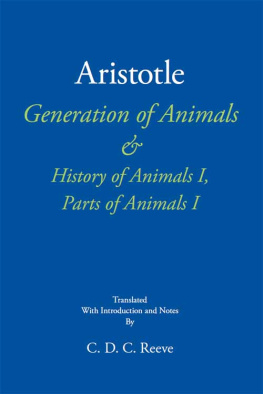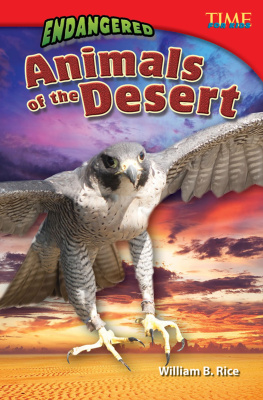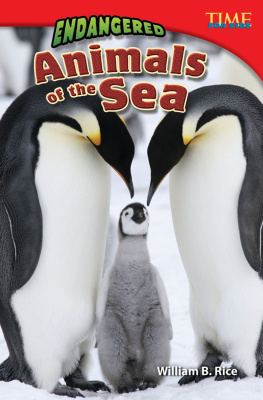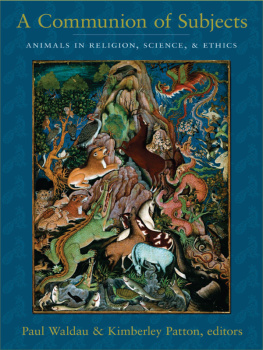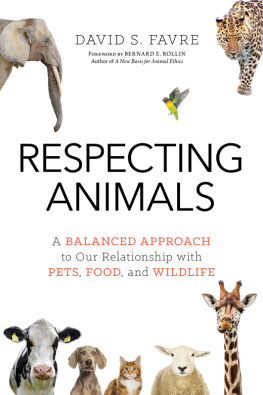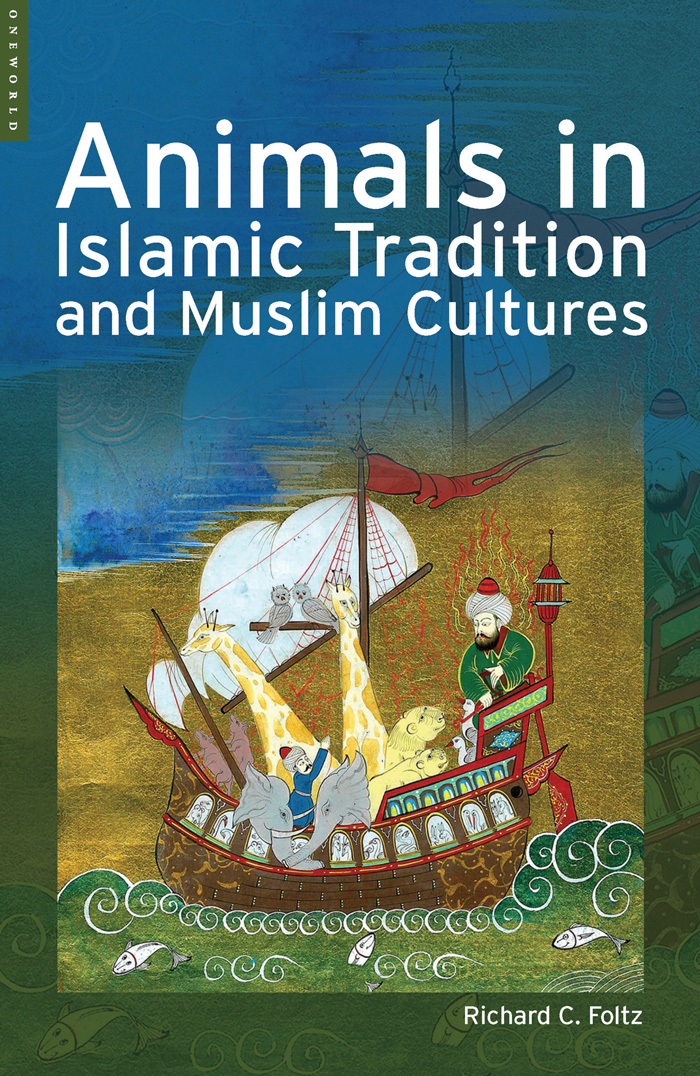Richard C. Foltz
A NIMALS IN ISLAMIC
TRADITION AND
MUSLIM CULTURES
Richard C. Foltz
A NIMALS IN ISLAMIC
TRADITION AND
MUSLIM CULTURES

Oneworld Publications
This ebook edition published by Oneworld Publications, 2014
First published by Oneworld Publications, 2006
10 Bloomsbury Street
London WC1B 3SR
England
www.oneworld-publications.com
Richard C. Foltz 2006
All rights reserved
Copyright under Berne Convention
A CIP record for this title is available
from the British Library
ISBN 978-1-78074-666-1 (ebook)
Cover design by Mungo Designs
Stay up to date with the latest books,
special offers, and exclusive content from
Oneworld with our monthly newsletter
Sign up on our website
www.oneworld-publications.com
To Bijan
CONTENTS
PREFACE
T his is a book I had hoped someone else would write. I have long felt that such a book is much needed, above all as a resource for Muslims. Islamic communities, however, have well-known and established criteria for determining who has authority to speak for the tradition, and I do not meet those criteria. I have not studied at any recognized institution of traditional Islamic learning; I have not received an ijza (permission to teach) from any acknowledged authority on Islamic law. A Ph.D. from an American university does not carry much weight in traditional Muslim circles when it comes to religious questions, nor perhaps should it.
To my mind, at least, it would have been preferable for this book to have been written by, say, a practicing lim (religious scholar) with a large following, or perhaps a law professor at the University of Jiddah, so that its credibility would be harder to assail. Or alternatively, had the arguments it contains been put forth by one of the Muslim worlds great contemporary radical thinkers, such as Khaled Abou El-Fadl, Farid Esack, or Abdol-Karim Soroush, it might have hoped to stir up debate within Muslim communities, at least among intellectuals. Perhaps one day they will be taken up, but for now it seems that all of these brilliant minds are too preoccupied with the many crises currently facing the human animal alone to focus very much on other species or our relations with them. I have tried myself to persuade some of these eminent figures to devote a little time and thought to inter-species questions, and failed.
So I am not sure that what I have to offer here will be seen as having much value for Muslims, though I will be most pleasantly surprised if it is. I suspect, however, that the audience for this book is more likely to be non-Muslims who are sympathetic to Muslim culture and interested in learning more about what it has to offer in terms of animal rights. I hope that this audience too will not be disappointed in what they find here, for this book is not an exercise in apologetics. The Islamic tradition does indeed offer much that can lend itself to respect for species other than our own, but it also contains much that is problematic from an animal rights activist point of view. And even much of what could resemble animal rights within the tradition is unheeded by most Muslims or unknown to them.
Having made clear my own lack of confidence and trepidation in writing this book, I cannot fault readers for asking why I have written it. The answer is simple enough: because there needs and deserves to be something available on the subject of animals in Islam, and for the present at least, no one else seemed prepared to do it. In the Persian language, one of the commonest expressions heard in daily conversation is ghorbn-e shom, May I be a sacrifice for you (literally, I am your sacrificial animal). Such is the spirit of humility which, hopefully, underlies this book.
I am grateful to Paul Waldau, whose invitation spurred me to write my first short survey of Islam and animals, to Martin Rowe, for encouraging me to expand that survey to a book-length treatment, and to Ayatollah Hasan Emami of Esfahan for kindly providing me with a copy of Jazayerys book on animals in (Shii) Islam. I am indebted to Richard Bulliet, Chris Chapple, Khalid Keshk, and Robert Tappan for their comments on the typescript and, as always, to Dsire and Shahrzad who are my dearest friends in the world. Novin Doostdar and the staff at Oneworld have been a continuing source of support and encouragement. Finally, I would like to thank my dog, Max, one of the strangest and at times most difficult of the many non-humans I have lived with, but also the most loving, forgiving, and non-judgmental, for constantly reminding and teaching me that human needs are no more pressing, important, or real than non-human ones, and indeed often less so.
To be fair, there do exist several short treatments, listed in the bibliography, but apart from the fact that all have serious weaknesses (not the least of which is an unwillingness to examine the tradition critically), they are mostly out of print and extremely hard to find.
INTRODUCTION: ISLAM, MUSLIMS, AND NON-HUMAN ANIMALS
D iscussions about the presence and roles of non-human animals in world religions have only recently come to be a part of academic inquiry, despite the fact that every religious tradition is full of stories about non-human animals and how humans interact with them. Paul Waldau cautions us, however, that Although such accounts can be surpassingly beautiful, they also can be positively misleading about the realities of other animals.
Religions are our primary source for codes of ethics, but these ethical systems are often considered to apply only to how we treat members of our own species. The international animal rights movement, which has its roots in early nineteenth-century England but really only began to flourish after the publication of moral philosopher Peter Singers book Animal Liberation in 1975, has demonstrated the arbitrariness and, ultimately, the indefensibility of ethical systems that draw a boundary at the species barrier.
Perhaps the main issue to arise in re-considering our ethics toward non-human animals is whether or not we can justify eating them, and the means by which we prepare them to be eaten. If we do choose to accord animals rights, certainly the most fundamental of these is the right to live. Thus, the vegetarian option must be engaged by anyone genuinely seeking to extend moral considerability to non-human animals. Some religions, especially in South Asia, have engaged this issue for thousands of years, while others (notably the Semitic traditions) have positively refused to do so.
But the use of animals for food is only one dimension of interspecies ethics. Historically, humans have used other animals as work slaves, as companions, and as objects for violent sport. Today, issues such as scientific experimentation and habitat destruction have been added to the mix. In none of these domains has the level of critical discourse in any mainstream human society kept pace with the realities of our treatment of other species.
The Islamic religion, while being the focus of much attention these days, does not often come up in discussions on animal rights. If the connection can be made at all, for many non-Muslims the most visible expression of how Muslims view animals may be the d al-Adha, the Feast of Sacrifice, which from the point of view of millions of domestic animals can only appear as an annually recurring global holocaust. The popular Muslim aversion to dogs and pigs, as well as the Arab affinity for camels and horses, are all well-known stereotypes. But to suppose that these isolated tendencies are representative of Muslim attitudes toward animals in general would be a narrow view indeed.


